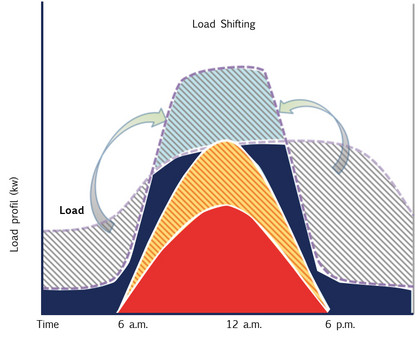Flexibility needed
Further integration of RE is not limited by their cost any longer, so attention now shifts to flexibility to ensure grid balancing and stability. With weather dependent production it is more efficient if consumption follows production to avoid costly energy storage. This is called the “Paradigm Change”.
In “Energy Only Markets” electricity prices do not follow supply and demand instantly. Consumption and renewable energy production during a certain period define fossil power plant schedules. Short term deviations are balanced in the control power market using contracts with large power producers and consumers. Unfortunately, with growing shares of volatile generation, such flexibility at the same time becomes more necessary and less available. When renewable generation exceeds demand, energy must even be destroyed (shedding).
The cheapest way to store energy is to use existing customer flexibility. Many energy applications do not need to draw energy at night when the sun is not shining: This includes heating and cooling applications, water treatment and pumping, and batteries that power electric vehicles. Here energy can be drawn from the grid at day time, while the output can be used around the clock. This is how the paradigm change can be implemented to make better use of solar energy production potential.

